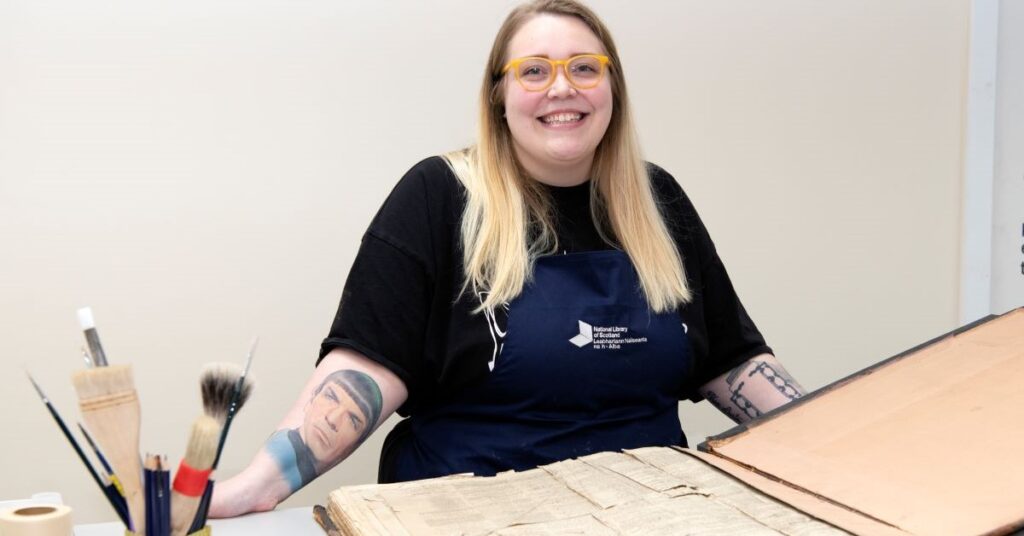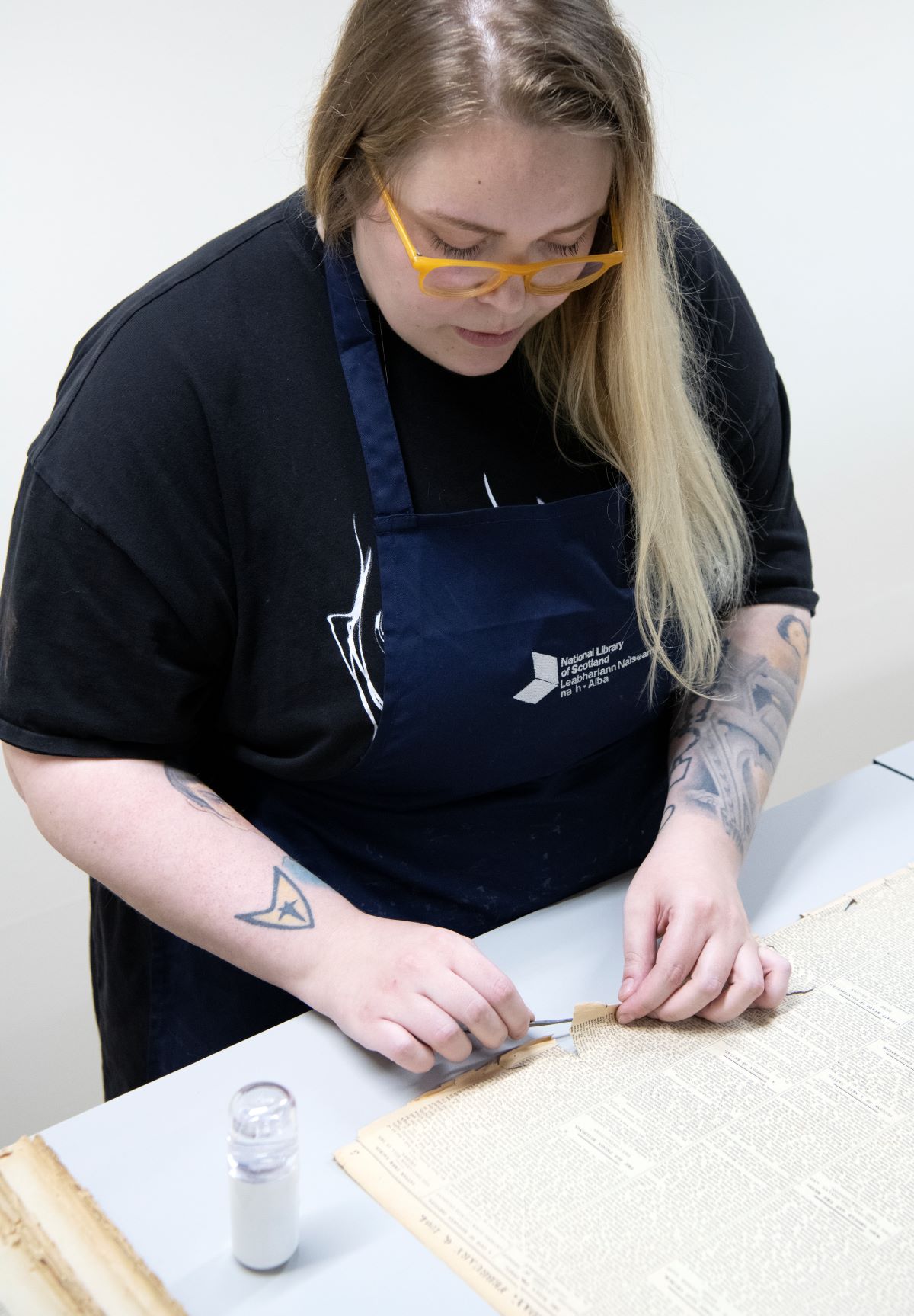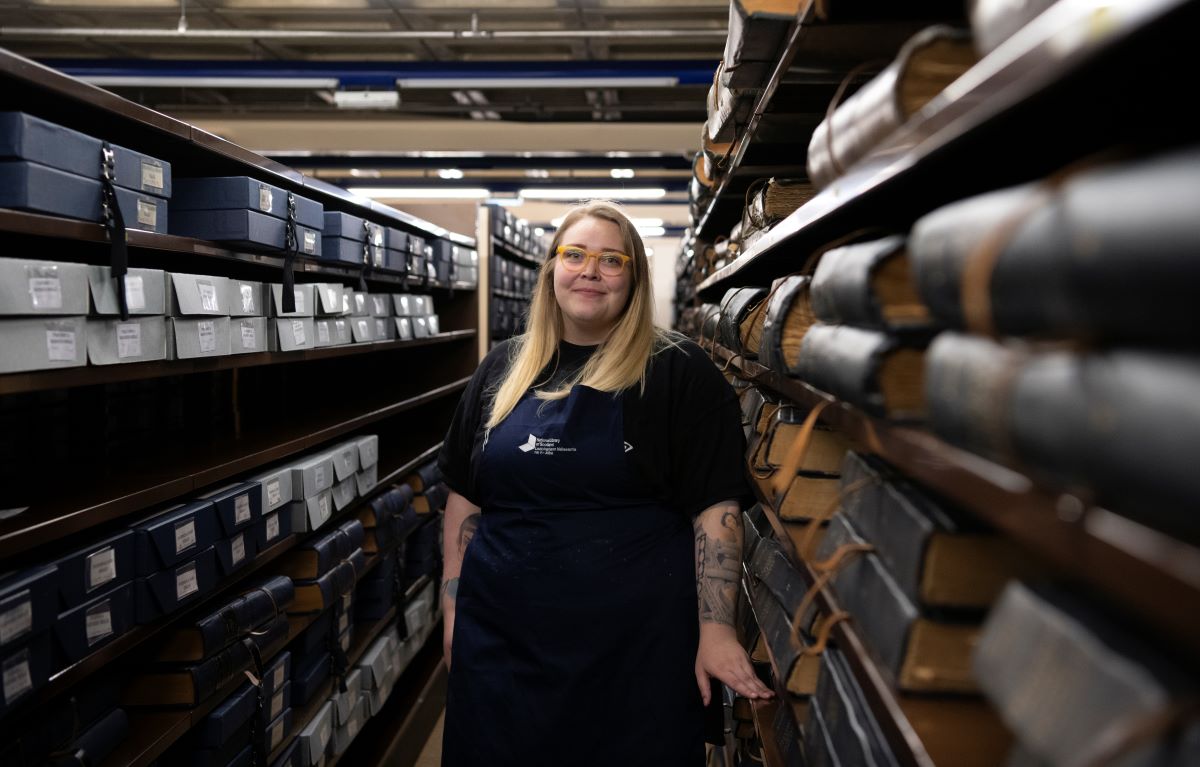
Life With the National Library of Scotland: ‘I have conserved incredible material from Jane Austen to Charles Darwin’
Conservator Claire Hutchison on having the patience to handle delicate archive material, working on a first edition of Darwin’s The Origin of Species, and safeguarding national collections.
When I was a kid, I was very much into painting and drawing, but I didn’t know about conservation until I was at high school. I was lucky enough to get work experience with a private paintings conservator based in Glasgow who showed me how to clean oil paintings. It was something that stuck with me as I went through uni and eventually led me to apply to a master’s degree in the Conservation of Fine Art on Paper at Northumbria University in 2016.
My career at the National Library started in 2018 as part of an Alexander Graham traineeship. I was tasked with the conservation of fragile formats, such as newspapers, wet press letters and transparent papers. My nine month traineeship has led to me becoming a specialist in the conservation of newspapers and ever since I have been the dedicated conservator for the Library’s vast Scottish newspaper collection.
‘There is nothing more satisfying than bringing an item back to life’
I have been lucky enough to conserve some incredible archive material while working at the Library, including letters of correspondence of authors from a publisher’s archive we hold. It includes the likes of Jane Austen, Lord Byron and Charles Darwin. I was involved in the conservation and rehousing of these letters, but also got to prepare a first edition of Darwin’s The Origin of Species for exhibition a couple of years ago. There is nothing more satisfying than seeing your work come to fruition and knowing you have brought an item back to life.
I like to start work as early as possible, normally around 7am. Most days are started by preparing my space, collecting the tools I need and creating a good stock of repair materials to see me through the day. I make sure I have enough repair papers cut, interleaving drying papers and adhesive, which is made from scratch on a weekly basis. From there I would conserve enough material to allow it to dry over lunch before starting the next batch. This would then be repeated, and any dry repairs trimmed. I would then tidy up my space to prepare for new material the next day.

Claire’s career at the National Library started in 2018 as part of an Alexander Graham traineeship.
‘I find the repetitiveness therapeutic’
I think most people would be put off by the repetitive nature of my work, but it’s something I relish. Patience is key to being a successful conservator, especially with newspaper conservation. My project work can require me to conserve up to six newspaper volumes a day. I have a great setup in the conservation studio that allows me the peace and quiet to focus on the task at hand. I find repetitive tasks to be oddly therapeutic.
I am currently working on a collection of newspapers from Perth and Kinross, called the Blairgowrie Advertiser, and its pages are very brittle. What’s required to repair it depends on the level of degradation, but most of the time I can expect to carry out hundreds of repairs to the brittle edges and torn pages in each bound volume.
We use a lightweight, toned Japanese paper in conservation as a repair paper, with a reversible adhesive such as Methyl Cellulose. Commonly used as a food thickener, it is great at repairing newsprint, as it can be made to a specific concentration and so the water content can be controlled, ensuring a quick-drying repair which is needed when working on a large scale.
‘It can be really disgusting at times’

She used a lightweight, toned Japanese paper in conservation as a repair paper, with a reversible adhesive such as Methyl Cellulose.
Conservation is integral to the safeguarding of our national collections. More needs to be done to advocate for the profession to ensure adequate resources are in place to allow us to continue to protect our heritage. That being said, we are lucky enough to have some excellent master’s programmes in the UK to help train the next generation of conservators.
We all have our limits, and mine is when I am faced with items in quarantine which are extremely dirty, covered in mould, or have evidence of pest damage. It’s never an easy job and can be really disgusting at times.
Although it seems counterintuitive, my evenings tend to consist of more of the same. I’m extremely fond of cross stitch, ideally with an episode of Star Trek on in the background.
Read more from the Life With series here.
Subscribe to read the latest issue of Scottish Field.
TAGS

